
Topics
Guests
- Jay Coghlanexecutive director at Nuclear Watch New Mexico.
- Chuck Montañoformer investigator and auditor at Los Alamos National Laboratory who faced retaliation after he blew the whistle on wasteful spending and fraud at the lab. He is now a board member with Concerned Citizens for Nuclear Safety.
In this special broadcast from just outside Los Alamos National Laboratory, we look at the radioactive legacy of New Mexico. The atomic bombs used in World War II were designed and developed here, and the state still plays a key role in maintaining the nation’s massive nuclear arsenal. We’re joined by two guests: Jay Coghlan, executive director of Nuclear Watch New Mexico, and Chuck Montaño, a former investigator and auditor at Los Alamos who turned whistleblower after calling attention to wasteful spending and fraud at the nation’s foremost nuclear weapons lab. [includes rush transcript]
Transcript
AMY GOODMAN: We’re in our 100-city tour here in Los Alamos, New Mexico. Yes, we are broadcasting from Los Alamos, the birthplace of the atomic bomb. We’re here at the historic Fuller Lodge, built in 1928 as a boarding school for boys. Gore Vidal was one of the better-known students here. The school was taken over by the U.S. government in 1943 to house the scientists for the Manhattan Project, the secret military program based here that produced the first U.S. nuclear weapon. The work was led by the physicist J. Robert Oppenheimer. This is Oppenheimer speaking shortly after the first bomb was tested in southern New Mexico in 1945.
J. ROBERT OPPENHEIMER: I have been asked whether in the years to come it will be possible to kill 40 million American people in the 20 largest American towns by the use of atomic bombs in a single night. I am afraid that the answer to that question is yes.
AMY GOODMAN: J. Robert Oppenheimer would later say, quoting the Bhagavad Gita, “I am the shatterer of worlds.” Less than a month after the first atomic bomb test, the U.S. dropped a uranium bomb known as Little Boy over the Japanese city of Hiroshima, killing up to 130,000 people. Three days later, Fat Man, a plutonium bomb, was detonated over Nagasaki. Later in his life, J. Robert Oppenheimer, often called the “Father of the Atomic Bomb,” warned the public about its terrifying power. In a 1965 television broadcast, he reflected on witnessing the first test nuclear explosion 20 years earlier.
J. ROBERT OPPENHEIMER: A few people laughed, a few people cried. I remembered the line from the Hindu scripture, the Bhagavad Gita: “Now I am become Death, the destroyer of worlds.” I suppose we all thought that, one way or another.
AMY GOODMAN: J. Robert Oppenheimer, the scientist who led the Manhattan Project that developed the only two atomic bombs dropped on cities, Nagasaki and Hiroshima.
Well, today, the place that was home to the dawn of the Nuclear Age still maintains America’s biggest nuclear arsenal. Los Alamos National Laboratory is the nation’s foremost nuclear weapons lab.
Los Alamos is only part of the nuclear story of New Mexico. The state’s long history of uranium mining on Native American lands provides fuel for the front end of the nuclear industry. It also stores much of the radioactive waste from nuclear weapons and power plants.
To talk more about this radioactive legacy that continues into the present, we’re joined by three guests. Jay Coghlan is executive director of Nuclear Watch New Mexico. Chuck Montaño is a former investigator and auditor at Los Alamos who faced retaliation after he blew the whistle on wasteful spending and fraud at the lab. And soon we’ll be joined by Leona Morgan, a coordinator with the group Eastern Navajo Diné Against Uranium Mining—their mission, to protect the water, air, land and health of communities in areas impacted by uranium mines.
Welcome, all, to Democracy Now! Let’s begin, Jay, with you. Give us a tour of where we are right now. We are sitting in the Fuller Lodge.
JAY COGHLAN: That is correct. And to zero in nationally, here you are on this 100-city tour across the country, but, of course, today you’re not in just any town. As you put it, we’re in the birthplace of atomic and nuclear weapons. Now, specifically, we’re sitting in the historic Fuller Lodge. You invoked the name of J.R. Oppenheimer, who was director of the Manhattan Project. I recall seeing another physicist who received the Nobel Prize for Physics, Hans Bethe, basically the man who figured out how the sun works, through nuclear fusion. But approximately—oh, I’d say about a dozen years ago, before he died, he gave a talk here in Fuller Lodge on the abolition of nuclear weapons, for which he was an advocate, speaking to Los Alamos employees. And afterwards, I just remember him standing on the veranda here at Fuller Lodge shaking his head, going, “They just don’t understand.”
AMY GOODMAN: And so, what happens here now?
JAY COGHLAN: Well, right now, as we’ve both noted, this is the birthplace of atomic and nuclear weapons. What the public doesn’t really understand is that the nuclear weapons business is very much ongoing, that funding for nuclear weapons programs within the Department of Energy is nearly 50 percent above the historic average of the Cold War. And this is within the Department of Energy, not necessarily Pentagon funding. But again, what I’m attempting to underline is the very fact that, despite the rhetoric that this country and others are working towards a future world free of nuclear weapons, on the ground what is happening is that the U.S. is rebuilding the production side of its nuclear weapons complex. And specifically here at Los Alamos, it is for the future expanded production of the plutonium cores of nuclear weapons.
AMY GOODMAN: What’s your problem with that?
JAY COGHLAN: Well, you know, first of all, I’m an outright advocate for the eventual abolition of nuclear weapons. As the president said in Prague close to four years ago, we’re going to have to maintain those weapons while we work towards eventual global disarmament. But what’s happening through so-called life extension programs is that the U.S. is extending the service life of its nuclear weapons on the order of three decades, while endowing them with new military capabilities. And the costs, themselves, are staggering. We’re ending up with nuclear weapons that just to refurbish cost more than their weight in gold.
AMY GOODMAN: I want to actually go to President Obama. It was soon after he came into office in 2009.
PRESIDENT BARACK OBAMA: So, today, I state clearly and with conviction America’s commitment to seek the peace and security of a world without nuclear weapons.
AMY GOODMAN: “A world without nuclear weapons.” Jay Coghlan?
JAY COGHLAN: Well, you know, first of all, that is extremely laudable. But I do want to point out that this is truly a bipartisan thing. And who perhaps politically was the foremost abolitionist of all? It was Ronald Reagan. And back in the late '80s, he and Gorbachev came within inches of a bilateral deal to begin to eradicate the world, to save the world, from the scourge of nuclear weapons. Now, having said that, the thing that essentially prevented the deal were the false claims made by the nuclear weapons laboratories—in this particular case, Los Alamos's sister laboratory, Livermore in California, but false claims being made over Star Wars. And that’s essentially what prevented Reagan from finally striking a deal with Gorbachev to rid the world of nuclear weapons. But I use this to point out the ongoing role of the three nuclear weapons laboratories in this country and the inordinate and, I would say, unfavorable influence that they have, not only on national but also international nuclear weapons policies.
AMY GOODMAN: Who runs the lab now?
JAY COGHLAN: Well, specifically, it’s being run for the government by a limited liability corporation, which of course is for-profit, which was a change since 2006. But the two dominant partners in this limited liability corporation are the Bechtel Corporation—famous, for example, for attempting to take over the water system in Bolivia, against which there was a popular uprising, so they were kicked out. But again, it’s the for-profit Bechtel Corporation and the University of California, something which is generally overlooked. But since the beginning, the University of California has been absolutely central to both the development and the ongoing continuation of nuclear weapons programs.
AMY GOODMAN: Chuck Montaño, welcome to Democracy Now! You worked here at the Los Alamos National Laboratory for more than three decades, for more than 30 years, coming here in 1978. You’re a whistleblower. You left about a year ago. Can you talk about what you did here, what you learned here, why you blew the whistle?
CHUCK MONTAÑO: Well, my background is in audits and fraud investigations, and so I was naturally looking into the control environment at the lab, looking for unallowable costs, excessive spending, cost overruns. And, of course, my—I’m professionally bound to report things as I find them and to develop work papers that will support my findings. The problem with the Department of Energy weapons complex is that auditors that really do their jobs in accordance with their professional requirements aren’t really wanted, because there’s a concern about reporting things that could be an embarrassment to the University of California. As Jay pointed out, the University of California ran the laboratory for 60-some years by itself, until 2006, when it formed a limited liability corporation, and Bechtel brought in Bechtel, the Washington Group and BWXT as industrial partners to run the Los Alamos Lab. But essentially the university maintained a dominant position.
So, my job was to look for fraud, waste and abuse, to look for internal control weaknesses. And what I discovered was that when I reported things as I found them, my reports would get—be held up, would be watered down. Sometimes they wouldn’t be issued. Taxpayers, of course, pay the price when the laboratory, for example, has procurement arrangements to procure certain items at certain prices, and then we find that vendors are actually selling items to lab employees that lab employees aren’t supposed to be purchasing or at costs that are much higher than what was contracted. When I brought those issues to surface, I became a problem. And auditors, in general, become a problem when they do that. Back in 2003, in the aftermath of the Wen Ho Lee situation, there were two seasoned criminal investigators that were brought in, and—
AMY GOODMAN: Wen Ho Lee being the Chinese-American scientist here at Los Alamos who was investigated by the FBI—actually before the 2001 attacks, if people are wondering what the FBI was doing before—saying that he had given secrets to the Chinese, which he adamantly disputed.
CHUCK MONTAÑO: He had not given secrets to anybody, actually. Dr. Wen Ho Lee was scheduled to be laid off along with about a thousand lab employees in 1995. He had received what was referred to as an “at-risk notice.” So at the time he—when he downloaded data, code that he had been working on, he was contemplating having to search for another job. All of that eventually came out, that that was what transpired. But that’s a—Dr. Lee is an interesting situation, because the downloading of classified information was something that I reported in one of my audit reports. That was a serious internal control weakness at the laboratory. Laboratory chose to ignore fixing that problem. Had the laboratory fixed that problem, then conceivably the Wen Ho Lee situation would have never occurred.
Later on, there were also problems with missing tapes containing classified information. One of my findings in this audit that I did of classified computing at the lab was that the laboratory did not have adequate control over the access of classified information. Vaults were basically open to anybody that wanted to go in, and they could remove items from the classified vault without anybody—without a second person as a witness and without having dual controls in place. That was one of my audit findings that’s another example where the laboratory chose to ignore some serious control issues that later on led to some serious problems with the laboratory having missing tapes, computer tapes.
AMY GOODMAN: Can you talk about Los Alamos and the millionaires?
CHUCK MONTAÑO: Well, Los Alamos—I’ve lived—I lived in Los Alamos 20 years. I grew up 45 minutes from here, in Santa Fe. We always saw Los Alamos as kind of a very elite community, largely because it’s very, very educated, and also because the laboratory pays very, very well. Normally, New Mexico is one of the poorest regions in the entire nation. So, as Los Alamos grew up and became a legitimate community in northern New Mexico, they basically—they grew up into a community of millionaires. It’s been reported repeatedly that Los Alamos has the most millionaires per capita of any community in the nation. And that’s because the laboratory pays very well. I’m not so sure the laboratory is doing any cutting-edge research anymore, since the Manhattan Project era days. But the people that come to work at the lab tend to stay until they retire, because retirement benefits are enviable. Surrounding communities, of course, are somewhat envious. There’s a line of people that would like to work at the lab, largely because of the salary and the benefits. And, of course, the laboratory tends to recruit from throughout the nation.
AMY GOODMAN: How were you retaliated against when you blew the whistle?
CHUCK MONTAÑO: Well, the standard practice, of course, is to pull your responsibilities away. In my case, I had all my responsibilities removed. I was put in a cubicle. And I characterize it to a Dilbert comic book episode, where I was just sitting in a cubicle without any work to do, absolutely no assignments for a period of nine months. That changed only after I returned legal representation; it didn’t change before that. And in fact, in July of 2004, the Los Angeles Times did an article about the lab and the culture of the lab and, in that article, made reference to my situation at the time I’d been in cubicle isolation for eight months. Even after that article came out, the laboratory did not change its practices with respect to keeping me isolated without any job assignments.
AMY GOODMAN: What do you think it’s most important for people to know, both about what happened to you and about what you exposed?
CHUCK MONTAÑO: Well, I think what’s imporant is that the taxpayer needs to understand, is that we’re at the front lines in terms of the employees of these institutions—the auditors, in particular, and investigators. Our job is to root out fraud, waste and abuse and to identify control weaknesses that could lead to fraud, waste and abuse. When we’re targeted for retaliation for doing our job, the taxpayer ultimately pays the price, with higher costs, cost overruns, secrets that get lost or misplaced and don’t get reported, health and environmental concern issues. You know, who’s at the front line, if not the workers, in terms of identifying risky practices that might contaminate the environment or expose workers to high risk, health and safety issues? So, whistleblower protection is critical, especially for facilities like the Los Alamos National Laboratory, because of the nature of the work that’s done and the kind of materials that they work with.
AMY GOODMAN: We’re going to break and then come back, and we’ll also be joined by a guest from the Navajo Diné Nation to talk about another part of the nuclear cycle: the uranium mines and what happens when the mines are closed and the tailings are left. Our guests: Chuck Montaño, former inspector here at LANL, the Los Alamos National Lab, who became a whistleblower, and Jay Coghlan, executive director of Nuclear Watch New Mexico. Stay with us.

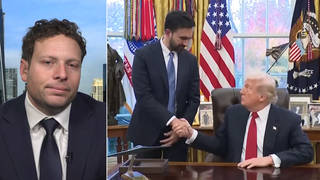
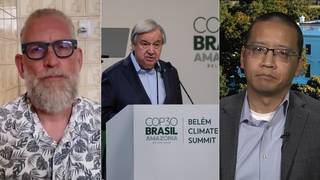
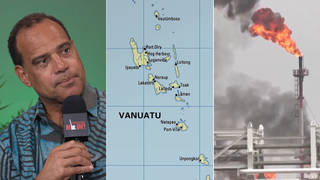
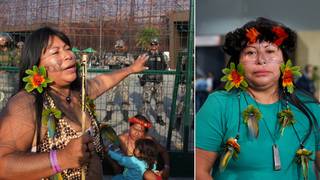





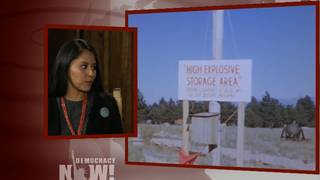
Media Options